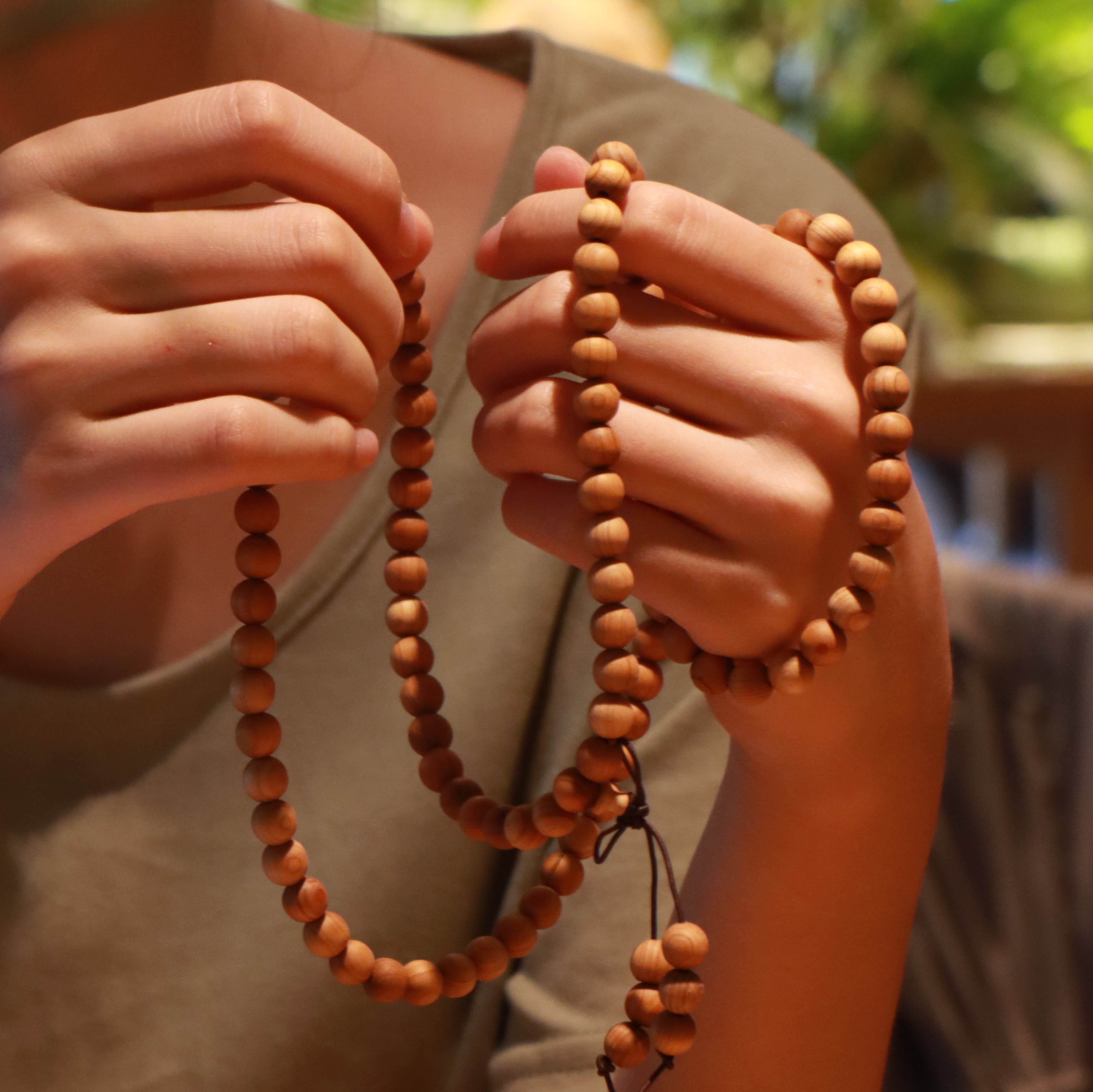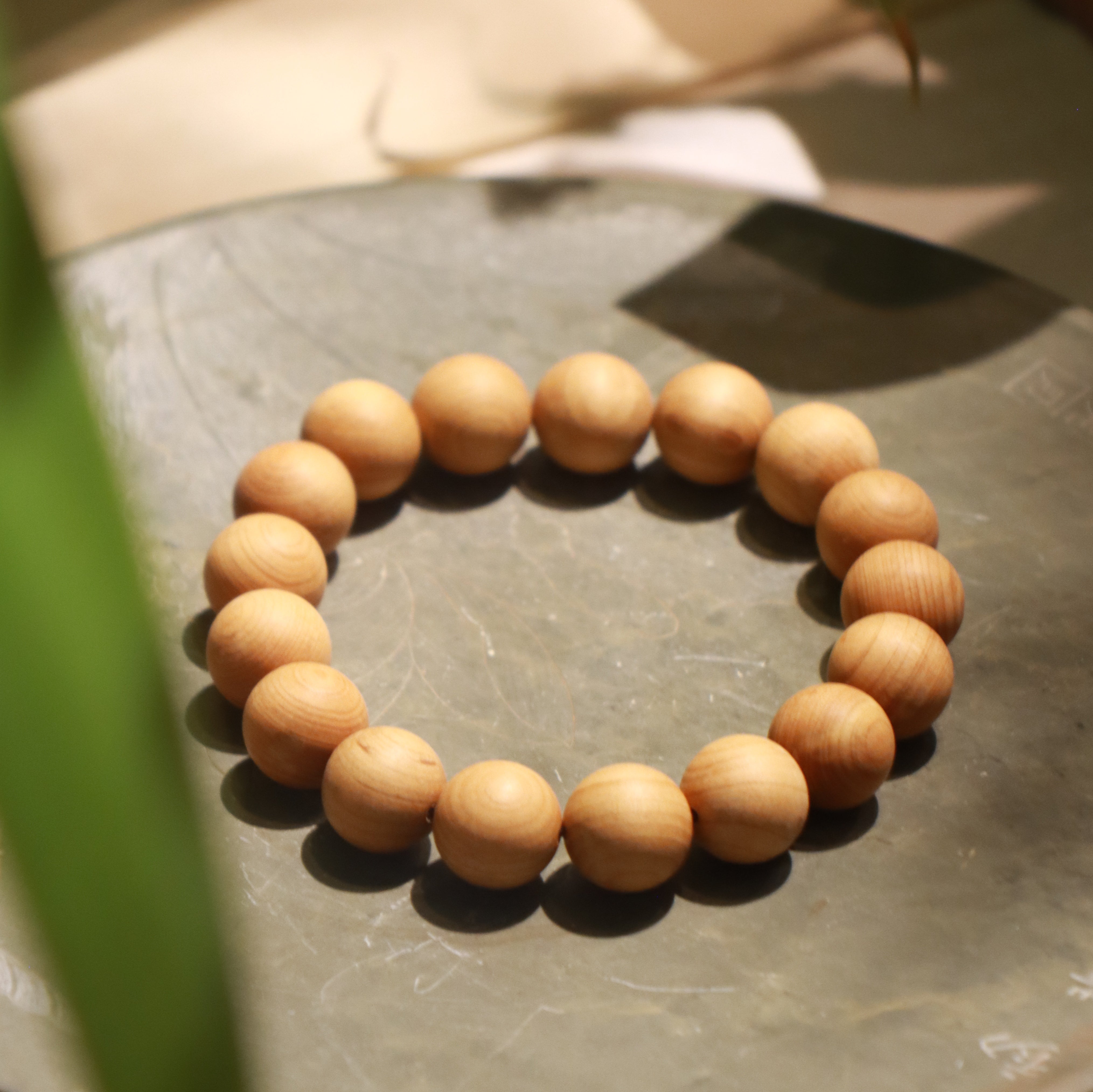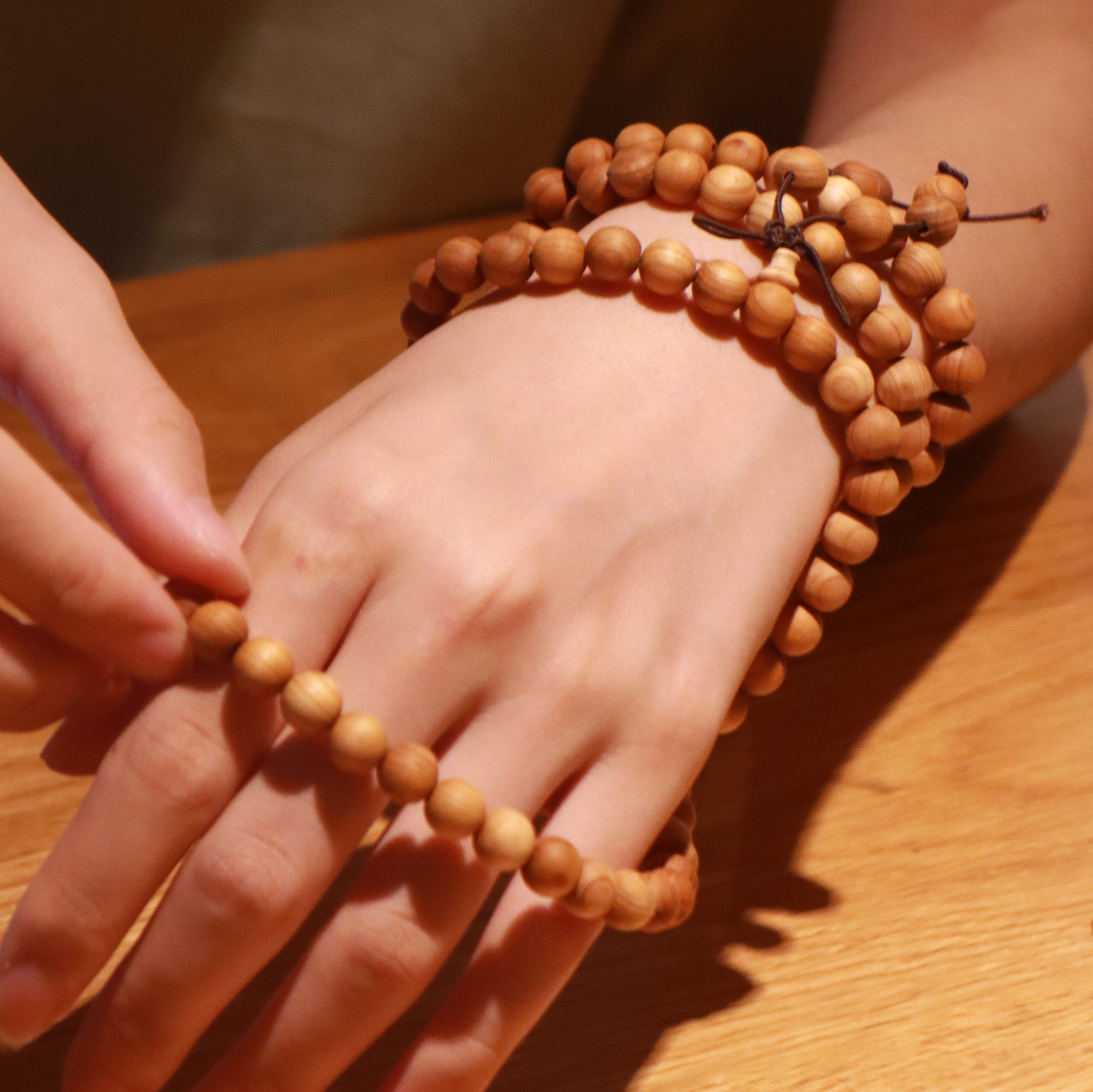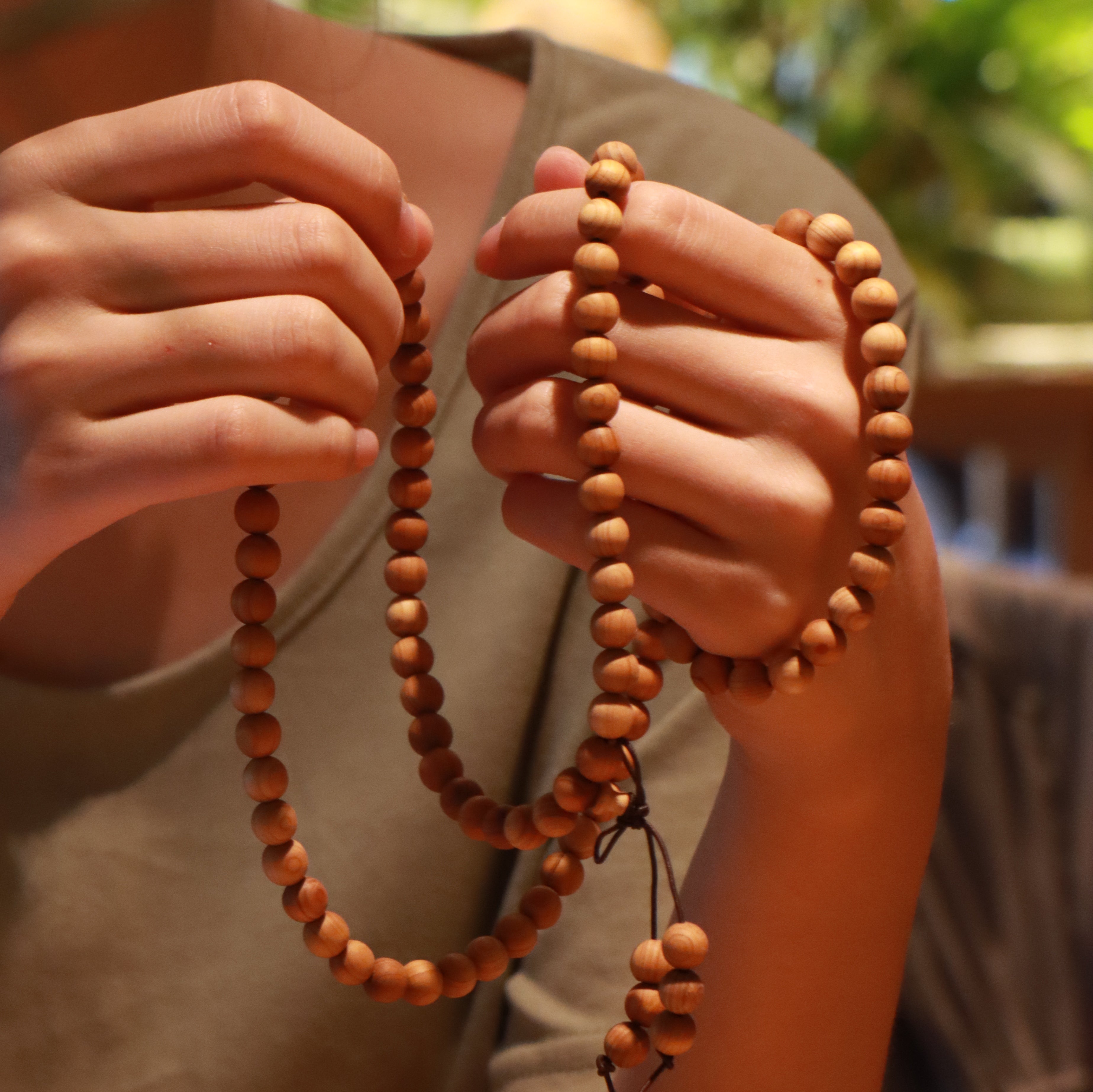1. Introduction and Symbolism
A Mala is typically comprised of 108 beads; these represent both Hinduism and Buddhism symbols of life and sacredness in various forms of symbolism.
Guru Bead The Guru Bead represents teachers, mentors or spiritual guides as it serves as a constant reminder for practitioners to express gratitude toward them for sharing knowledge that has contributed to their personal or spiritual growth. It should always be worn on the 109th bead on any necklace to remind oneself to express our thanks to our teachers for imparting such invaluable lessons!
Knots and Tassels
Tassels represent wisdom, enlightenment and expansion through compassion - making knots between beads easier to count while increasing durability and aesthetics appeal. Their placement symbolizes spiritual awakening as they expand knowledge.
Cross-Cultural Influence
Mala Beads have evolved beyond their religious origins to become icons of global spiritual culture, widely utilized to promote mindfulness meditation and personal growth.
Mala Beads have long been used as tools of religious, cultural, and spiritual practice - from ancient to modern times - they remain essential tools in finding inner peace and spiritual awakening.
2. Differ Between Mala Necklaces and Mala Bracelets
Mala necklaces contain either 108 or 109 beads (incorporating the Guru Bead). On wrist mala bracelets, 54 beads or less may be strung around one wrist, while these hand-knotted bracelets range between 54, 27 or 18 beads; their wear locations also differ - usually neck and chest for Mala necklaces and around neck/chest for Mala bracelets, respectively (with some being hand knotted bracelets). Ultimately, both types are worn around the neck/chest to represent and embody both types.
Wrist Mala: Worn around one or both wrists. Ideally, on the right hand. Wrist malas are compact versions of beaded necklaces suitable for meditation and spiritual practices.
3. Materials Needed to Make Mala Beads or Bracelets
Mala beads or bracelets require selecting appropriate materials in order to meet both functionality and aesthetic goals. Below is a comprehensive list of materials covering both essential components as well as optional embellishments that could make for the ideal product.
Essential Materials
Beads At least 108 8 mm beads of any shape or type for necklaces or mala/prayer beads for bracelets will be necessary, or counter beads with additional aesthetic or spiritual meaning could also be included as options for the project. A Guru Bead (an 8mm bead with special significance to you and others).
One 8mm Guru bead serves as the symbolic centerpiece to represent their teacher or spiritual guide, with S-lon thread (doubled up if required for bead compatibility) used on necklaces; cotton or hemp thread approximately 1.5 feet in length for bracelets and an adaptable beading needle used for threading beads for bracelets and necklaces respectively. A flexible beading needle for threading beads.
Scissors for cutting thread to an appropriate length. Securing Materials
Such as glue (e.g., GS Hypo Cement) or polish for securing knots and improving durability. Tassels as optional additions.
Mala beads and bracelets have long been worn to symbolize spiritual awakening and compassion as decorative elements on necklaces and bracelets or to bring spiritual meaning. Small charms add personalization and spiritual significance.
Counter Beads
They are great for marking specific intervals within bead patterns to add both functionality and design elements.
4. Step-by-Step Guide to Making a Mala Bracelet
Making your own Mala bracelet can be both enjoyable and fulfilling, here is a detailed guide with step-by-step instructions to assist in crafting something both useful and beautiful.
Step 1: Collect Materials

Before getting started, ensure you have all of the required materials and tools at hand.
Choose Your Beads
Carefully consider size, material and symbolism when selecting beads for a Mala bracelet. Semiprecious stones may have healing benefits; wooden and glass beads can also work. A standard Mala bracelet typically requires 54 beads arranged into three rows: 54 beads in total for its diameter plus 18 additional ones depending on your preferred size - you should aim to have 54, 27, 21, 18 or 18 beads for an array.
Prepare Additional Components
Guru Bead: A focal point for any bracelet design, often larger or uniquely styled. Thread: For optimal results, use strong thread like cotton, hemp or S-lon; 1.5 feet is typically recommended in most designs. Its Optionals: Charms, tassels or counter beads to add aesthetic value; tools include flexible beading needle for threading beads and scissors to trim thread.
Use glue (e.g., GS Hypo Cement) to secure knots if desired. For help selecting beads that are symbolic and compatible with each other, refer to resources or guides on bead symbolism and compatibility.
Step 2: Thread Your Beads

Once all of the materials are prepared, start threading your beads.
Prep Your Thread
Cut thread to length, leaving extra for knotting. If necessary, double it for added strength in bead holes. Start Threading
Thread your needle, leaving equal lengths on both sides. String beads one at a time on either end; for knotted designs, tie an overhand knot after threading each bead in order to separate them and create knotted designs. Eventually, add your Guru Bead!
Once the main beads have been threaded, add the Guru bead at the end. This bead symbolizes the conclusion of your mantra or meditation cycle and acts as an anchor point. As optional steps, additional counter beads or spacers between sections may further enhance their design while serving as functional markers for mantra counts.
Attach a charm or tassel to the Guru bead to add additional meaning or decoration.
Step 3: Tie an End Knot

Securing your bracelet for durability and useability is crucial. Tie its end knot securely so it lasts the distance!
Secure the Guru Bead Tie a firm knot at the base of the Guru bead to prevent it from slipping off, or loop the thread back through before knotting for added support and reinforcement. Depending on desired results, additional adjustments may be made as desired for additional stability.
Adjustable Knots: Create adjustable sliding knots to enable flexibility in bracelet size. Tassel Attachment: Tie the tassel directly onto either end of the thread or Guru bead for additional decoration. Finishing Touches Using Scissors, trim any excess thread carefully for an aesthetically pleasing finish.
Apply a small dab of glue to each knot to keep them together and prevent unraveling, then allow the glue to dry completely before wearing your bracelet.
Step 4: Add Optional Decorations
For a traditional Mala look, tassel the Guru bead or knot to complete its look. At each interval, add charms or counter beads for personalization and enhanced functionality of your bracelet.
Step 5: Secure and Trim (optional)

Wipe off any excess glue before applying another thin coat to secure your final knots, allowing it to dry completely before trimming any extra thread with scissors to ensure they do not unravel during this step. For optimal results, be sure to read our Tips for Success below for success with knotting thread.
Bead Selection: Make selections that align with your spiritual intentions or aesthetic preferences with regard to both beads and knot placement. Knot Placement: Keep knots consistent and evenly spaced for an aesthetically pleasing result, ideally spaced every 6 inches or so for professional looks. Thread Strength: When working with heavy or large beads, test thread strength regularly in order to ensure its durability.
Final Tips and Considerations Customization: Choose bead colors, materials, and additional elements that reflect your aesthetic and intentions. Functionality: Ensure knots are secure and evenly spaced to provide both aesthetically pleasing results as well as ease of use during meditation sessions.
Maintenance: For optimal durability and energy retention, store your Mala bracelet safely to maintain its longevity and energy.(Agate Charging Bowl)
Why Make Your Own Mala Bracelet?
Crafting your own Mala bracelet allows you to imbue it with personal meaning and intention, creating something with deeper symbolic value than simply spiritual tools. Furthermore, creating it yourself ensures it meets all your specific requirements in terms of size, design and energy requirements.
By following this guide, you can make a Mala bracelet that embodies your personal energy and intention - one that symbolizes both spiritual practice and is simply beautiful jewelry! Wear your Mala as part of spiritual practice, or simply use it as an elegant, meaningful accessory!
Looking for High-Quality Mala Beads and Accessories?
If you're inspired to create your own Mala bracelet but prefer expertly crafted materials or finished products, we recommend visiting KarmaBless.com. Known for their expertise in spiritual accessories, KarmaBless offers a wide range of premium Mala beads, Guru beads, tassels, and other materials to help you create a piece that reflects your intentions perfectly.
Explore the carefully curated collections on KarmaBless.com to find everything you need for your spiritual journey—whether you're crafting your own Mala or seeking a thoughtfully designed piece to enhance your practice. Let KarmaBless be your trusted source for Mala beads and accessories that are as meaningful as they are exquisite.















